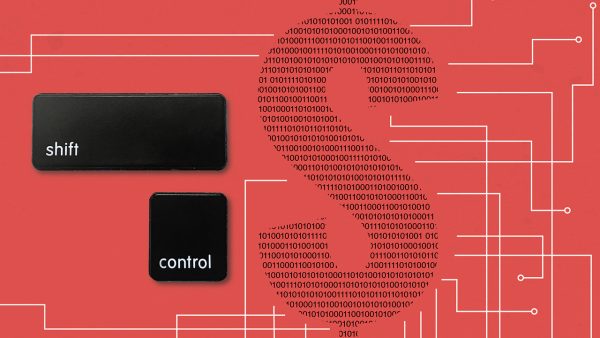January 9th, 2019
Purpose, Passion, Vision

In today’s ever-changing communication climate, it is increasingly more important to be a beacon for doing what is right and what works for employees, clients, consumers and the community.
The idea of corporate social responsibility isn’t new, but it has found new life for brands, companies and consumers. According to a 2018 Cone/Porter Novelli Purpose Study, 77 percent of consumers “feel a stronger emotional connection to purpose-driven companies over traditional companies,” 79 percent say they are “more loyal” and 73 percent are “willing to defend that company.”
Brands with a purpose set on improving out qualify of life outperform the stock market by 120 percent.”
– Interbrand’s Best Global Brands 2017
With this in mind, we ourselves are doubling down on this approach – for our clients and ourselves. As we approach 100 years of doing business, we are reimagining our future and vision.
Bozell has always had a heart for making a difference in this world. Giving back is not an option, but rather a requirement to do business. Our founder, Morris Jacobs strongly believed that we should “pay rent for the space we occupy on this earth.” Because of this …
Our vision is to “empower those who aspire to change the world.”
This vision is more than words on a page. It is the words by which we live, it is what helps us make decisions, and it is what helps us build lasting relationships.
October 29th, 2018
Open the Door to Personalization
Personalization has become so much more than having someone’s name in an email or direct mail piece. With the amount of data we’re now able to collect in regard to customer behavior, we’re capable of targeting our ideal customers more directly and effectively. We can basically deliver to them a desired message, product or service on a platter. But a big question is … do consumers perceive this as good or bad? Do they like seeing ads that appeal to them? Or do they feel like their privacy is being violated? We’ll dive into all of that, as well as tips on how to best use personalization in your advertising, in this issue of Thinking.
October 29th, 2018
We’re Drowning in Information but Starved for Insights
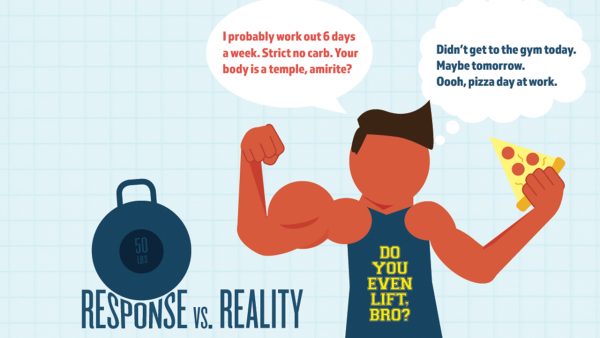
In general, the use of data has helped marketing relevance for both marketers and consumers in the last few years. But if you’re trying to create change in the marketplace, you can’t be lulled into thinking you have what you need to develop successful strategies. Because whether it’s survey data or purchase data, it’s far from perfect.
Data tells us a lot about the “what,” but little to nothing about the “why.” It doesn’t provide any insight into how to get someone to switch brands. Or increase purchase frequency. Or provide any nuance that can help strengthen messaging. And we can’t rely on historic data to predict future behaviors.
As marketers, we need to understand more about the “whys” of customer behavior in order to get meaningful insights to make key strategic business decisions. But the reality is that direct questions, like those on most surveys, rarely beget insightful answers. When it comes down to it, people tend to make decisions based on emotional reasons, and a lot of our emotional thinking happens in our subconscious. When asked directly, oftentimes, the responses are either directly or subconsciously misleading because respondents:
- Want to look good or appear smart.
- Want to be seen as politically correct.
- Want to be helpful or please the interviewer.
- Want to avoid jeopardizing personal or professional relationships.
50% of people provide misleading responses to direct research questions.
Because of this, consumers may say one thing and do something else entirely. And despite all the information we have, it can leave marketers in a lurch. It’s critical that we find ways to glean real, meaningful insights that can lead to better strategies to succeed in today’s new normal.
October 29th, 2018
Big Brother is Here
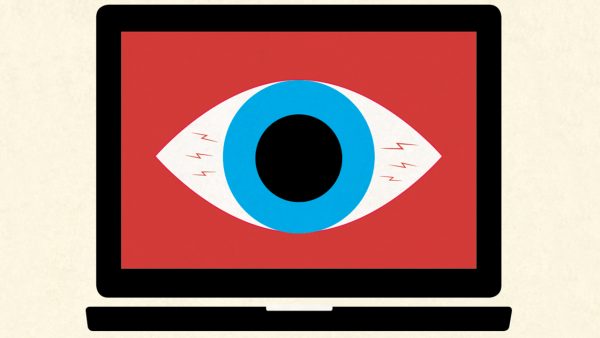
Thanks to George Orwell and his infamous “1984,” we have been paranoid for decades, convinced Big Brother will eventually control our lives and strip us of our freedom.
In Orwell’s tome, the government watches your every move and even listens to your every conversation – maybe even helped by Alexa as some uninformed individual’s insist. What’s next? The Fortune 1,000 moves in to garner your personal data? Or does this terror stem from a much more basic fear: “The more my information is out there and not under my control, the easier it will be to steal my identity and/or my money”? What are we afraid of?
A fall 2016 survey by The Chartered Institute of Marketing (CIM) started out with the assumption that consumers were informed and merely in need of having the terms and conditions of handling their personal data articulated more clearly. In fact, the study revealed that “people are in the dark about data and scared of being spammed or scammed … Some 92% of respondents did not fully understand how information that companies gleaned about them was being used, and they were highly skeptical about marketing practices,” Chris Daly from the Institute says. “Fear of data breaches and misuse has them on high alert.” Ignorance is a major factor in fear.
Ironically, most of the companies collecting data about you are trying to give you a better, more meaningful and more productive relationship with their brands. By tapping into your purchase habits and preferences, they can customize their outreach to hone in on products/services that are more relevant to you, thus saving your time and their money. Consumers want the convenience and personalization that sharing their data with a company provides. As Ben LeDonni says in a recent Forbes article, “We can’t say, ‘I want my technology personalized to me, but I don’t want companies to know too much about me.’” LeDonni urges consumers to “read the privacy policy carefully, and make sure you’re comfortable … if the company does not have a privacy policy … do not give them anything.”
Companies have been selling their mailing lists for decades, but the paranoia has now reached new heights. In truth, we have seen some mega-breaches from companies that were expected to protect us – Target, Uber and Facebook, to name a few. And, of course, there are careless breaches in companies that collect your data without your permission or knowledge, like Equifax. Based on the CIM study, we can assume that the advent of technology and the dangers implied has ramped up consumer fear and made most of us feel unacceptably vulnerable.
When The Harvard Gazette asked cybersecurity expert Bruce Schneier about the pervasiveness of corporate surveillance, he responded, “Surveillance is the business model of the internet. Everyone is under constant surveillance by many companies … We’re the product, not the customer.” Schneier bluntly states in a Money article, “You can’t do anything. That’s the fundamental problem with this.”
The European Union has taken a lead in curtailing rampant data collection with their creation of the General Data Protection Regulation, or GDPR, to protect citizens from companies trying to obtain too much of their personal information. But what is too much? A lot depends on interpretation, implementation and enforcement, according to Human Rights Watch. GDPR is complicated, and likely a nightmare to administer.
Right now, our best bet is to follow cybersecurity guidelines. It’s not perfect, but it’s all we’ve got. So even though it’s a huge pain, we should utilize different and complex passwords for everything, and use two-factor authentication when we are able. And be cautious about signing away our privacy rights.
October 29th, 2018
1 of 2: The Perks of Personalization

The most beautiful sound in the world has almost nothing to do with music. Pavarotti has probably never sung it and birds have never chirped it. Eleanor Rigby, Polythene Pam and Mean Mr. Mustard are among the select few who ever heard it from The Beatles. Kanye only raps it to himself.
No matter who you are and what type of music you listen to, the most delightful, beautiful, wonderful sound in the world is … your name.
Every year, Forbes ranks the world’s most admired companies. Three of the safest bets to appear each year: Apple, Starbucks and Southwest. Computers, coffee and commuter flights. Different products. Strikingly similar strategies: mass production … for you.
What’s the first thing you do when you buy a new iPhone? You change the background. You edit your contact list. You make that phone yours. That plastic rectangle with the polka-dot case and the photo of your three cats isn’t an iPhone 6. It’s “Cheryl’s iPhone 6.” What about Starbucks? Whether you’re in Pittsburgh or Poughkeepsie, the coffee tastes the same. But what does every single barista ask after he takes your order? “Can I get a name?”
That grande soy mocha foo foo latte is yours, darn it. And when you buy your six-dollar Starbucks at LAX and head toward the Southwest gate, they will never assign you a seat. But that Southwest agent takes your ticket, scans your barcode and says with a smile: Have a nice flight, Cheryl. And you love the sound of that.
October 29th, 2018
2 of 2: The Pits of Personalization

“Personalization in advertising.” It sounds so appealing; after all, I’m a strong advocate for starting with the audience when crafting an effective advertising message.
But the way personalization is currently employed is disturbing, and often has the unintended effect of alienating the very audience it’s supposed to connect with.
It’s either creepy – “You know those shoes you looked at two months ago? We’re stalking you.” – and more often, just plain wrong. The supposedly laser-targeted ads aimed at me have less relevance than the random outdoor board on my daily commute.
My day job entails researching all manner of obscure and arcane topics. Just because I once searched for animal health products doesn’t mean I own a pet. And speaking of creepy, according to a recent Wall Street Journal story, several companies employ humans – not bots – to read your emails (“it’s common practice”) in order to improve ad targeting.
Case in point: I had an email exchange with a former co-worker over a company bankruptcy. Within days, my Google search results were dominated with ads for bankruptcy attorneys. Trust me, if I ever need representation, not one of you creepy bloodsuckers will get my business.
Look, I’ve long ago given up the fantasy that there is any privacy when I go online, so the least they could do is get it right. It’s like self-driving cars: they’re coming; I’d just as soon they get it right. You want to deliver personalized ads to me? Send ads for sushi when I’m thinking about what to have for dinner. Don’t keep showing banners for cameras weeks after I’ve already bought one.
That’s not very appealing. And a complete waste of money.
October 29th, 2018
How to Swoon Consumers as They Walk By
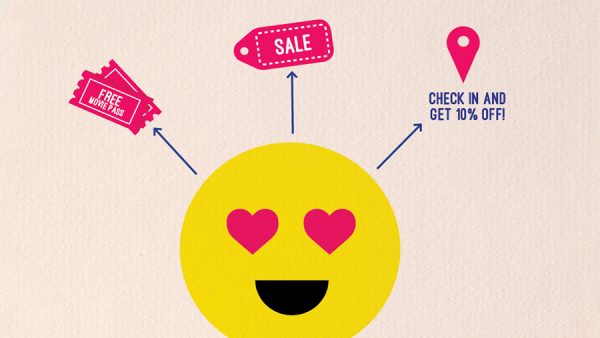
It’s no mystery to anyone on the planet that the smartphone has changed the way we interact with our world. It has the power to distract, but, moreover, the power to help. Consumers want more options, more interaction and more “smart” in their smartphone. This is where the physical web, beacons and other location-specific devices have a unique position to make our devices and the websites and apps upon them more connected to the businesses and those highly-valuable marketing efforts you’ve been running.
There are a few proximity marketing devices being used out there: beacons, geo-location, wifi and NFC to name a few. Beacons more recently being of the most popular types. They are passive Bluetooth™ tech that allow the consumer to interact with the world around them in unique and personalized ways. Long gone are the days when everyone gets the same exact overwhelming and useless message. You can send or push videos, personalized landing pages, content and offers that are relevant to your consumer at an exact moment in time.
Four Reasons to Start Using Proximity Marketing Today
- Smart Campaigns
The insights from how your consumers interact with your marketing campaign are invaluable. Push notifications and targeted campaigns can be easily measured. How is it being used? How many people interacted with it? Is it valuable to the consumer? With the insights into your consumer’s behavior, you can make smarter decisions moving forward, which makes them happy and you happy. - Push Notifications
So, here comes the fun part. With proximity-based marketing, we have the capability of turning the world around the consumer into a Notification Center. They’re walking by your store, your restaurant, your event – interacting with your brand at that moment. It’s an amazing time to reach them with a highly personalized coupon, message, game or offer. - Better Consumer Experience
Your consumers are going to thank you. They’re asking for more personalization; they don’t want what everyone else is getting. They also don’t want to be sold to, but they do want to buy from you. If you’re sending them the wrong message at the wrong time, they may ignore your brand – or worse yet, drop you altogether. When they receive something, whether by email, social or push notification, that is immediately relevant to their needs (or wants), they are going to engage with you. - Higher Awareness and Conversion
For marketers today, conversion (the one metric to rule them all) is the holy grail. Personalized proximity campaigns see a 44-percent lift in engagement almost immediately, according to Google. So even if your one metric isn’t conversion, the fact that you’re paying attention enough to that consumer will make them feel surprised and delighted, which will lead to brand lift and awareness, as well.
Time to get a move on …
Overall, personalizing campaigns with proximity equals more work. It’s not a perfect, one-fell-swoop, click-and-boom-delivered tactic. There is some careful thought and consideration and market segmentation you have to do. But don’t let that sound as though it’s a lot of work. It’s not. Start small and experiment some with one to two market segments. Offer a BOGO to one and a 15% OFF to the other. You’re putting in the effort up-front, but the end result is a more fitting marketing campaign, better reach and awareness, and the personalized touch to that consumer will leave them feeling in love with what you have to offer.
70% of smartphone owners who bought something in a store first turned to their devices for information relevant to that purchase. And when people search on mobile, it tends to lead to action: 92% of those who searched on their phone made a related purchase.”
– Lisa Gevelber, VP of Marketing at Google
October 29th, 2018
Increasing Relevance Through Personalized Creative
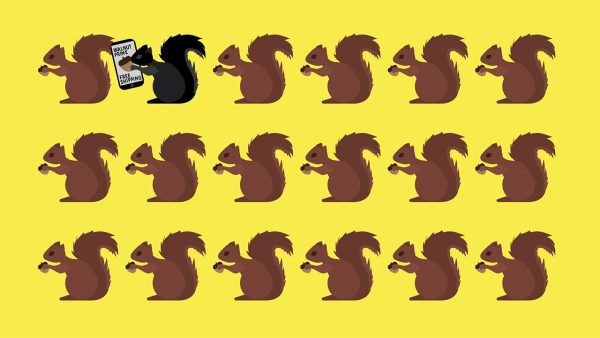
The right message. To the right person. At the right time. The advent of programmatic advertising and dynamic creative capabilities has markedly changed the online advertising landscape. But this change has also transformed the way in which we must think about and plan out online advertising campaigns.
Let’s start by defining the terms programmatic advertising and dynamic creative relative to online marketing.
Programmatic advertising: an automated way of buying and selling media, usually used to reach specific demographics and psychographics, wherever they are.
Dynamic creative: functionality that allows advertising to change things like messaging, imagery and calls to action based on audience data and/or real-world triggers like weather, time of day or location.
The following tips will help you make the most out of the technologies that exist.
Power with technology. Make effective with insights. Enhance with creativity.
The technology that powers this new functionality is only one part of the equation. A successful online advertising campaign must also feature an equally compelling creative idea based on an undeniable truth.
Is there an interesting consumer behavior that only happens during a certain time of the day, only in certain weather conditions or only by consumers with certain affinities? Think through a creative way to acknowledge and reflect these conditions in a way that adds relevance to the viewer.
Know your customers. And would-be customers.
It’s important to understand your audience. What does the creative look like for people who already use your product or service? How does that change for people who’ve never even heard of your brand? Segmenting your messaging and creative strategies throughout the user journey from passive awareness to active evaluation will allow you to make the most of your programmatic ad spend.
A good way to get started is to create a visual flow chart showing the progression of the messaging, how it’s affected by customer-status and even how retargeting efforts play into the larger equation.
Take a front-loaded approach.
A traditional online campaign drips into the marketplace. It launches with a handful of ads, then, maybe a month later, is followed up by a new set of ads, tweaked and reconfigured based on what you’ve learned so far.
Programmatic advertising personalized through audience data and real-world triggers takes more of a front-loaded approach. You’ll have to think through and implement all the possibilities from the very beginning, all baked into a single ad unit. The technology takes it from there, showing the right message to the right person at the right time, usually optimizing performance by reallocating impressions to the highest performing combinations of messaging, imagery and calls to action.
While it may seem like a lot more work, it’s actually pretty comparable. The work just takes place in a more condensed timespan.
Take your time in the beginning. It’s worth it.
120 variations of a single ad? It sounds scary. But when you think about it, which would you prefer? 120 different files with 120 different tags? Or one file with one tag? And what sounds better? Guessing what a customer will click on? Or finding out through automatic user testing of multiple messaging, imagery and call-to-action permutations? While these technologies may increase your cost per thousand, they’ll not only reduce wasted impressions, but increase something even better: ROI.
Entering the land of programmatic advertising and dynamic creative may seem scary at first, but after a few campaigns under your belt, you’ll wonder how you ever did it any other way.
August 9th, 2018
No Cash. No Card. New Problems.
The advent of new ways to pay is ushering in a lot of changes in the wide world of FinTech. Apple Pay and Google Pay plus Venmo – oh my! People have lost their patience for waiting in line to make a transaction or conducting business over snail mail. They expect to be able to access their money from anywhere in the world using their almighty smartphone.
The name of the game is now simple, easy, quick.
This shift in mindset affects marketers, even if they don’t operate in the FinTech realm. In this issue of Thinking, get the scoop on FinTech’s effect on marketers, along with an overview of commerce solutions, a deep dive of Apple Pay, and our quick take on Blockchain. And finally, we’ll share some tips on how to update your website to meet the rising expectations. So you can make that money madness just a little more manageable.
August 9th, 2018
What is FinTech?
Starting with the Basics
“FinTech,” the portmanteau of financial technology, is often used as short hand for new participants providing internet-based, application-oriented financial services. However, focusing only on start-ups ignores that legacy financial institutions are dramatically transforming how they bring products and services to market – in an effort to be more nimble and responsive to customer demands.
So then, what exactly does a typical FinTech look like?
Typical is hard to define, and the landscape might look different a year from now as FinTech evolves.
I would define the FinTech players as:
- Large, well-established financial institutions, such as First National Bank of Omaha, Mutual of Omaha or TD Ameritrade.
- Infrastructure companies that provide technology or facilitate financial services transactions, such as ACI, First Data or MasterCard.
- Big tech companies that have carved out a unique relationship with their users and are currently or could easily extend into financial services. For example, Apple, Google and Facebook.
- Younger, fast-moving companies like Plaid, D3 Banking or Prosper.
Though FinTech has been around since the advent of ATMs, it’s no secret that the technology has been booming lately. And it’s going to continue to grow. Rapidly.
While legacy firms are working hard to keep up, they are not innovating fast enough, opening up opportunity for fast-moving companies that focus on one product or service. Usually, these start-ups focus on disintermediating the most profitable activities of the legacy financial services providers, like mortgage, savings, transfers and payments.
This means it’s important for all companies, large or small, whether in the financial industry or not, to think about their growth. The need is greater than ever to invest in new customer-facing technologies. In order to compete, and even
to survive.

